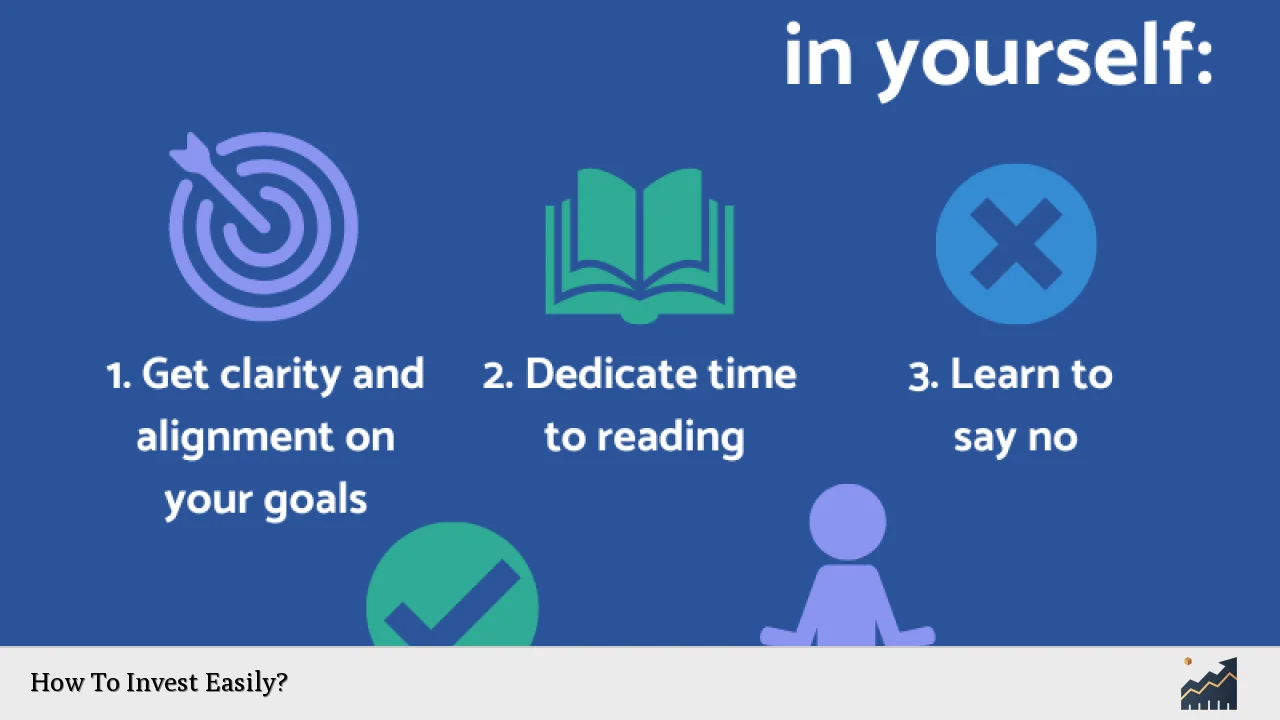Investing is a crucial step towards achieving financial stability and growth. It involves allocating resources, often money, in order to generate income or profit over time. With the right strategies and tools, anyone can embark on their investment journey, regardless of their financial background. This guide aims to simplify the investment process for beginners, providing practical steps and strategies to make investing easier.
Understanding the fundamentals of investing is essential. Investing can take many forms, including stocks, bonds, real estate, and mutual funds. Each type of investment carries its own risks and rewards. The key is to find an investment strategy that aligns with your financial goals and risk tolerance.
To help you navigate the world of investing, we will cover various strategies that are beginner-friendly and easy to implement. Additionally, we will provide a table summarizing the different types of investments available.
| Investment Type | Description |
|---|---|
| Stocks | Shares of ownership in a company. |
| Bonds | Loans made to corporations or governments. |
| Mutual Funds | Pools of money from many investors to purchase a diversified portfolio. |
| ETFs | Exchange-traded funds that track indexes or commodities. |
| Real Estate | Property investments for rental income or resale. |
Understanding Your Financial Goals
Before diving into investing, it’s vital to identify your financial goals. Are you saving for retirement, a home, or your child’s education? Knowing your objectives will help shape your investment strategy.
Start by setting short-term and long-term goals. Short-term goals might include saving for a vacation or an emergency fund, while long-term goals often focus on retirement savings or wealth accumulation over decades.
Consider how much risk you are willing to take. Generally, higher potential returns come with higher risks. If you are risk-averse, you might prefer safer investments like bonds or savings accounts. Conversely, if you are willing to take risks for potentially higher returns, stocks or real estate may be more suitable.
Additionally, assess your current financial situation. Ensure you have an emergency fund in place before investing. This fund should cover at least three to six months of living expenses to protect you from unforeseen circumstances.
Choosing the Right Investment Account
Once you have defined your financial goals, the next step is to choose the right investment account. There are several types of accounts available:
- Brokerage Accounts: These accounts allow you to buy and sell a variety of securities like stocks and bonds without tax advantages.
- Retirement Accounts: Options like IRAs (Individual Retirement Accounts) or 401(k)s offer tax benefits for retirement savings.
- Robo-Advisors: These platforms provide automated investment management based on your risk tolerance and goals.
Selecting the right account depends on your objectives and how actively you want to manage your investments. If you’re looking for a hands-off approach, a robo-advisor may be ideal.
Investment Strategies for Beginners
Investing can seem daunting at first, but several strategies make it easier for beginners to get started:
- Dollar-Cost Averaging: This strategy involves investing a fixed amount regularly regardless of market conditions. It helps mitigate the risk of market volatility by averaging out purchase costs over time.
- Index Funds: These funds track specific market indexes like the S&P 500. They offer diversification at a low cost and are ideal for passive investors.
- Dividend Stocks: Investing in companies that pay dividends provides regular income in addition to potential capital appreciation.
- Exchange-Traded Funds (ETFs): ETFs combine features of stocks and mutual funds. They trade like stocks but offer diversification across various assets.
Each of these strategies allows beginners to invest without needing extensive market knowledge while still working towards their financial goals.
Diversification: A Key Principle
One of the most important principles in investing is diversification. This strategy involves spreading investments across various asset classes to reduce risk. By diversifying your portfolio, you can protect yourself from significant losses if one investment performs poorly.
Consider diversifying among:
- Different asset classes (stocks, bonds, real estate)
- Various sectors (technology, healthcare, consumer goods)
- Geographic regions (domestic vs. international markets)
A well-diversified portfolio can help smooth out returns over time and reduce overall risk.
The Importance of Research
While investing can be simplified through strategies and tools, conducting thorough research is critical. Understanding the assets you’re investing in helps make informed decisions.
Start by learning about:
- Market trends
- Economic indicators
- Company performance (if investing in stocks)
Utilize resources such as financial news websites, investment blogs, and educational platforms that provide insights into market movements and investment opportunities.
Monitoring Your Investments
After establishing your investments, it’s essential to regularly monitor their performance. Set aside time each month or quarter to review your portfolio’s performance against your financial goals.
During this review:
- Assess whether your investments align with your objectives.
- Rebalance your portfolio if certain assets have become too dominant.
- Stay informed about changes in market conditions that may affect your investments.
Regular monitoring ensures that you remain on track towards achieving your financial goals while allowing you to adjust strategies as needed.
Seeking Professional Help
If navigating the investment landscape feels overwhelming, consider seeking help from a financial advisor. A professional can provide personalized guidance based on your unique situation and help create an investment plan tailored to your needs.
When choosing an advisor:
- Look for credentials such as CFP (Certified Financial Planner).
- Understand their fee structure—some charge commissions while others have flat fees.
- Ensure they have experience working with clients who share similar financial goals.
Professional guidance can enhance your confidence in making investment decisions and help avoid common pitfalls.
FAQs About How To Invest Easily
- What is the best way for beginners to start investing?
The best way is to define financial goals clearly and choose simple investment vehicles like index funds or ETFs. - How much money do I need to start investing?
You can start with small amounts; many platforms allow investments with no minimums. - Is it necessary to hire a financial advisor?
No, but hiring one can provide valuable insights and personalized strategies. - What are some common mistakes new investors make?
Common mistakes include not diversifying enough and letting emotions drive decisions. - How often should I review my investments?
You should review them at least quarterly to ensure alignment with your goals.
Investing does not have to be complicated or intimidating. By understanding your goals, choosing the right accounts and strategies, diversifying effectively, conducting research, monitoring progress regularly, and seeking professional advice when needed, anyone can invest easily and confidently toward achieving their financial aspirations.

